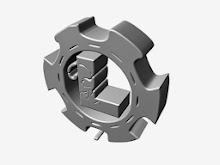
Description:
This
project is a fine combination of Android mobile technology and embedded system.
An application should be installed on android mobile handset to control various
home appliances. User...
line follower robot-with and without microcontroller.
Wednesday, 2 October 2013
Posted by AVINASH CHAKRAVARTHI

it really nice experience to make line follower to this weekend .
we can make it either by using micro controller or with out micro controller.
first we will see without making microcontroller...

have u ever wonder,how we can control robots to move right left straight back.with out using steering in bots. i'll show u how we can control the direction of the bots .first we need to know abt...

blood oximeter (heart beat measuring from finger )
Introduction:
This project describes a technique to measure heart rate through fingertip. The blood volume inside...

some times ,u might have 9v battery and u need only 5v to run ur load.then this voltage regulators place a crucial role.
normally 78xx series ics are used to regulate the voltages
here is the list of...

two things to be taken in to consideration while purchasing the motors,they are
speed and torque
speed will be measured in RPM (rotation per minute),more is the rpm more will be the speed.
the amount...

The 555 Integrated Circuit (IC) is an easy to use timer that has many applications. It is widely used in electronic circuits and this popularity means it is also very cheap to purchase.
A 'dual'...








